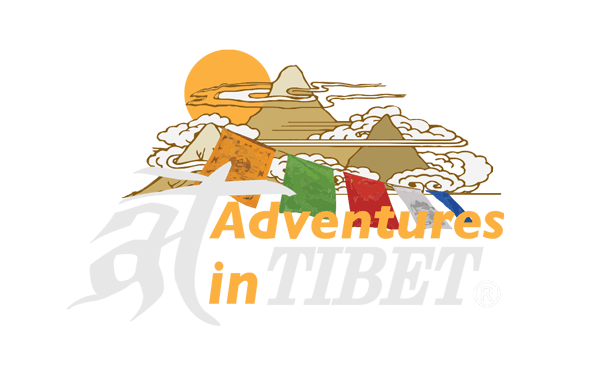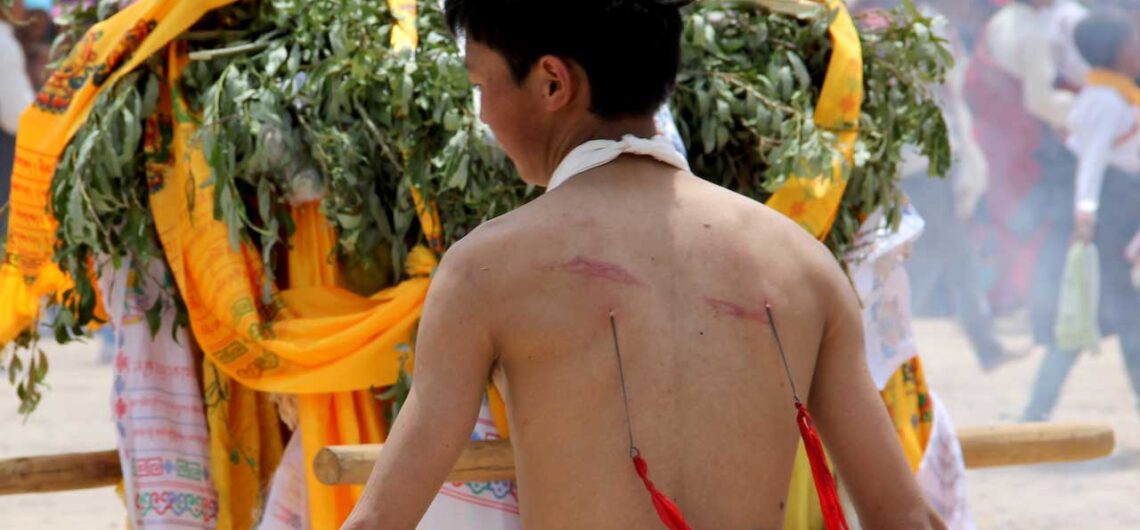Introduction to Tibetan Shamanism (དྲུག་པའི་ཀླུ་རོལ།)
Tibetan Shamanism is a folk religious activity since 1400 years ago. Genuinely, Lurol (ཀླུ་རོལ་) is the Tibetan word, which in English is enjoying the Nagas. It is being celebrated from 16th July to 25th July (based on Chinese calendar) as an annual activity. During the activities, worshipping divinities, piercing cheeks, piercing back-skin, dancing, playing Naga’s drum. Especially, the youngsters eagerly to get piercing both their mouth and back-skin from the oracle to wash evil influences and obstacles for the current year. The oracle also cuts the forehead and offers his own blood to the local deity in profound faith and praise.
Nevertheless, Tibetan Shaman festival is mainly for the purpose of diminishing ailments. Misfortunes and draughts to induce much happiness to all sentient beings. Thus, Lurol can be classified into three types: God dance, Nagan dance and Militant dance. These three types of dances are being rotated among the villages of Repkong every year and are considered to be important activities attaching both Tibetan culture and religion. If you are interested Tibet shaman’s festival tour, we can arrange you the best suitable tour program.
2 Examples Of Lurol Activities In Some Popular Villages
Langgya Village Lurol
Mt. Amnye Lhari and Mt. Amnye Mogkar are local deities of Langgya village. Their Tibetan Shamanism or Lurol festival starts on July 20 to July 23, based on agricultural calendar. At the beginning, on 20, do the inaugurations such as preparing thangkas of the local deities putting on a decorated pole with Kadags. On the 21st, they perform a complete militant dance on the hill where local deity’s temple is located. Again, they do the same performance in Langgya upper village and lower village and plus Naga’s dance as a program of the day.
On the 22nd, it is the main Tibetan Shaman’s Festival day. Oracles of the two villages meet each other in a way of greeting with dancing along the way. They will cut their forehead to offer their own blood to the local deities. Addressing to the people from interring the local deities in them. On the 23rd, they do Naga dancing by asking rain to have a good harvest. On the 24th, they carry back the thangka of the deities to the temple to end the festival.
Sakyi Village Lurol
Sakyi village has the longest history of marking Lurol festival than the others. So far, Mt.Amnye Shachung is birth divinity of the Sakyi village.The Shamanism here start from June 16th to June 19th of Chinese calendar. On the 16th, men carry and invite the local deity to each and every houses of the village to get blessings. On the 17th, men climb top of the mountain by early in the morning that belongs to the local deity and burn incense offerings, then return back to the temple where the local deity lives in. All villagers assemble there full day by offering dances such as men’s dancing. Young women’s dancing, Azara dancing, stilts dancing, Thugjee Chenpo dancing (circling dancing involved men and women together). The activities are almost the same dancing until 19th. The festival ends at last with burning huge incense offering for the local deity.
Essential Internal & External Links That May Help You:
Chinese Visa Application | Tips for a Budget Tibet Tour | Plan a Successful Tibet Tour | About Us | Trekking Adventures | Our Office Direction | Plan a trip to Amdo | Festival Dates | Festival Tour | Tibet travel guide | Plan a trip Tibet | Saga Dawa Festival Tour | Shoton Festival Tour | Kailash Manasarovar Yatra Tour | Home |


Comments